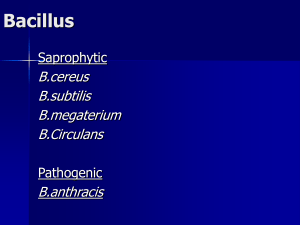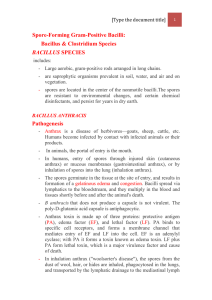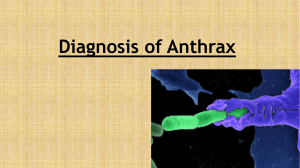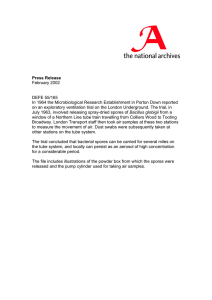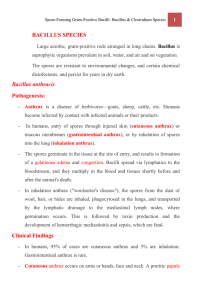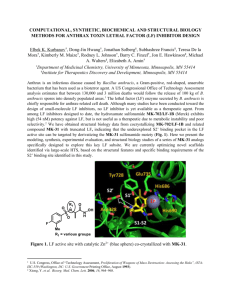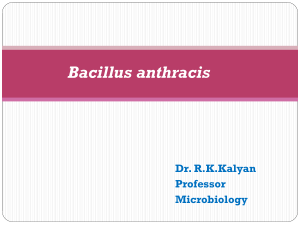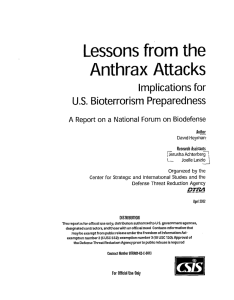ANTHRAX
advertisement
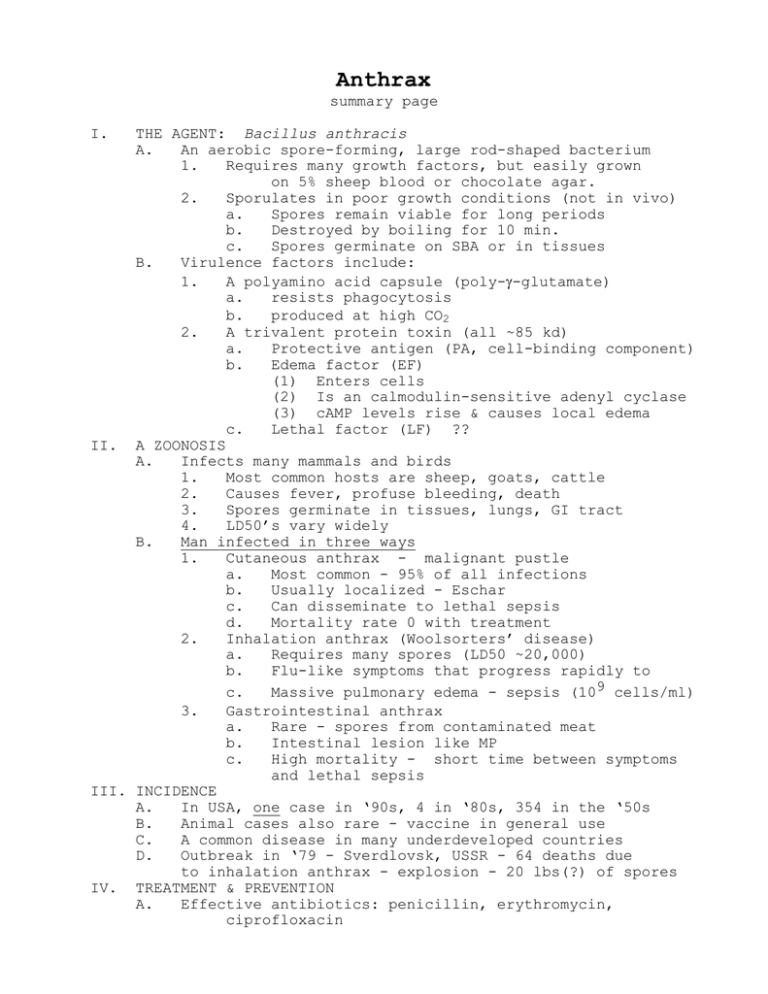
Anthrax summary page I. THE AGENT: Bacillus anthracis A. An aerobic spore-forming, large rod-shaped bacterium 1. Requires many growth factors, but easily grown on 5% sheep blood or chocolate agar. 2. Sporulates in poor growth conditions (not in vivo) a. Spores remain viable for long periods b. Destroyed by boiling for 10 min. c. Spores germinate on SBA or in tissues B. Virulence factors include: 1. A polyamino acid capsule (poly--glutamate) a. resists phagocytosis b. produced at high CO2 2. A trivalent protein toxin (all ~85 kd) a. Protective antigen (PA, cell-binding component) b. Edema factor (EF) (1) Enters cells (2) Is an calmodulin-sensitive adenyl cyclase (3) cAMP levels rise & causes local edema c. Lethal factor (LF) ?? II. A ZOONOSIS A. Infects many mammals and birds 1. Most common hosts are sheep, goats, cattle 2. Causes fever, profuse bleeding, death 3. Spores germinate in tissues, lungs, GI tract 4. LD50’s vary widely B. Man infected in three ways 1. Cutaneous anthrax - malignant pustle a. Most common - 95% of all infections b. Usually localized - Eschar c. Can disseminate to lethal sepsis d. Mortality rate 0 with treatment 2. Inhalation anthrax (Woolsorters’ disease) a. Requires many spores (LD50 ~20,000) b. Flu-like symptoms that progress rapidly to c. Massive pulmonary edema - sepsis (109 cells/ml) 3. Gastrointestinal anthrax a. Rare - spores from contaminated meat b. Intestinal lesion like MP c. High mortality - short time between symptoms and lethal sepsis III. INCIDENCE A. In USA, one case in ‘90s, 4 in ‘80s, 354 in the ‘50s B. Animal cases also rare - vaccine in general use C. A common disease in many underdeveloped countries D. Outbreak in ‘79 - Sverdlovsk, USSR - 64 deaths due to inhalation anthrax - explosion - 20 lbs(?) of spores IV. TREATMENT & PREVENTION A. Effective antibiotics: penicillin, erythromycin, ciprofloxacin B. C. D. Antitoxin effective in inhalation anthrax Vaccine for those at risk In 1998 all military personnel to be vaccinated

